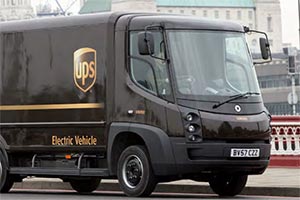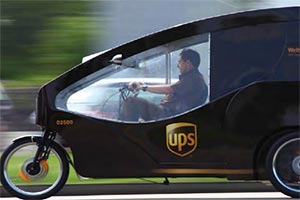UPS Drives 1 Billion Miles Using Alternative Fuels

UPS Inc. has completed a project to drive 1 billion miles using alternative fuels and advanced technology one year earlier than it planned, the company announced Aug. 2.
The Atlanta-based carrier began the “Rolling Laboratory” in 2012, testing vehicles powered with electricity, natural gas, renewable diesel, propane and ethanol. It also tested electric bicycles and tricycles in European cities in which lawmakers are regulating tailpipe emissions. More than 7,200 vehicles were used worldwide in the test.
“The question wasn’t, 'Should we make alternative fuels work?' ” said Mike Whitlatch, UPS vice president of global energy and procurement. “Instead, it was, 'What’s the best way to make alternative fuels work for UPS and for the environment?’ After more than a decade of focus, we are now driving more than 1 million miles globally each business day in our alternative fuel and advanced technology fleet.”
UPS ranks No.1 on the Transport Topics Top 100 list of the largest U.S. and Canadian for-hire carriers.
The report recommends propane fuel and hydraulic hybrid vehicles for suburban or rural trips of 100 miles or more. For cities, UPS suggests using ethanol, electric vehicles or electric bicycles and tricycles. For longer hauls, the report concludes that natural gas and renewable diesel are the best options.
 UPS Inc.
UPS Inc.Renewable diesel refers to fuel derived from organic sources, such as animal fats or vegetable oils, which is chemically identical to traditional diesel but does not require a petroleum blend, according to the U.S. Department of Energy. But UPS concedes there are concerns about the cost to produce renewable diesel and how it could impact other industries.
“These tests confirm that the use of renewable diesel lowers overall emissions, with a 4.2% reduction in tailpipe CO2 and 4.1% reduction in NOx emissions,” the report states. “Although fuel economy decreases slightly, overall performance improves — with quicker starts, a more powerful and smoother drive, and fewer harmful emissions.”
Renewable natural gas comes from methane, which is purified and processed, then distributed to natural gas stations across the United States. At the end of 2015, UPS had 33 such stations in 19 states, and the company will have 45 before the end of this year. The report finds that total production and use of RNG results in a 90% cut in greenhouse gas emissions compared with traditional diesel.
UPS also studied the effect of telematics on the overall emissions from its fleet. The company believes it can cut 100 million miles and save 10 million gallons of fuel per year through route optimization.




